Python and Precision Livestock Farming

Python and Precision Livestock Farming
Introduction
Precision Livestock Farming (PLF) is a rapidly evolving field that utilizes electronic tools and methods to revolutionize the management of livestock. By leveraging advanced technologies, PLF aims to optimize animal production, improve welfare, and reduce environmental impact. One of the key driving forces behind this transformation is Python, a powerful programming language that plays a pivotal role in data analysis and automation within the industry.
What is Precision Livestock Farming?
- Precision Livestock Farming is a cutting-edge approach to livestock management that utilizes electronic tools and methods to optimize animal production, improve welfare, and reduce environmental impact.
- It involves the use of sensors, data analytics, and automation technologies to monitor and control various aspects of livestock farming in real-time.
Why Python for Precision Livestock Farming?
- Python has emerged as a powerhouse in Precision Livestock Farming by enabling efficient data analysis and automation processes.
- Its simplicity, readability, and extensive libraries make it an ideal choice for handling large volumes of livestock data and extracting valuable insights.
- Python's versatility allows it to be used for a wide range of tasks in PLF, including data visualization, machine learning, and control system development.
Python has transformed the way Precision Livestock Farming operates by providing robust solutions for data analysis. With libraries such as pandas and NumPy, farmers can efficiently process and analyze large datasets to gain actionable insights. For example, by analyzing historical weight data of animals, farmers can identify patterns to optimize feeding regimes and ensure optimal growth.
Furthermore, Python's scriptability allows for the automation of routine tasks in livestock management operations. This includes automating feed dispensers, climate control systems, and even robotic milkers. With Python's automation capabilities, farmers can streamline their processes, reduce manual labor, and improve overall efficiency.
In conclusion, Precision Livestock Farming powered by Python offers tremendous potential for the industry. By harnessing the power of data analysis and automation, farmers can make more informed decisions leading to increased productivity, improved animal welfare, and sustainable farming practices.
Understanding Precision Livestock Farming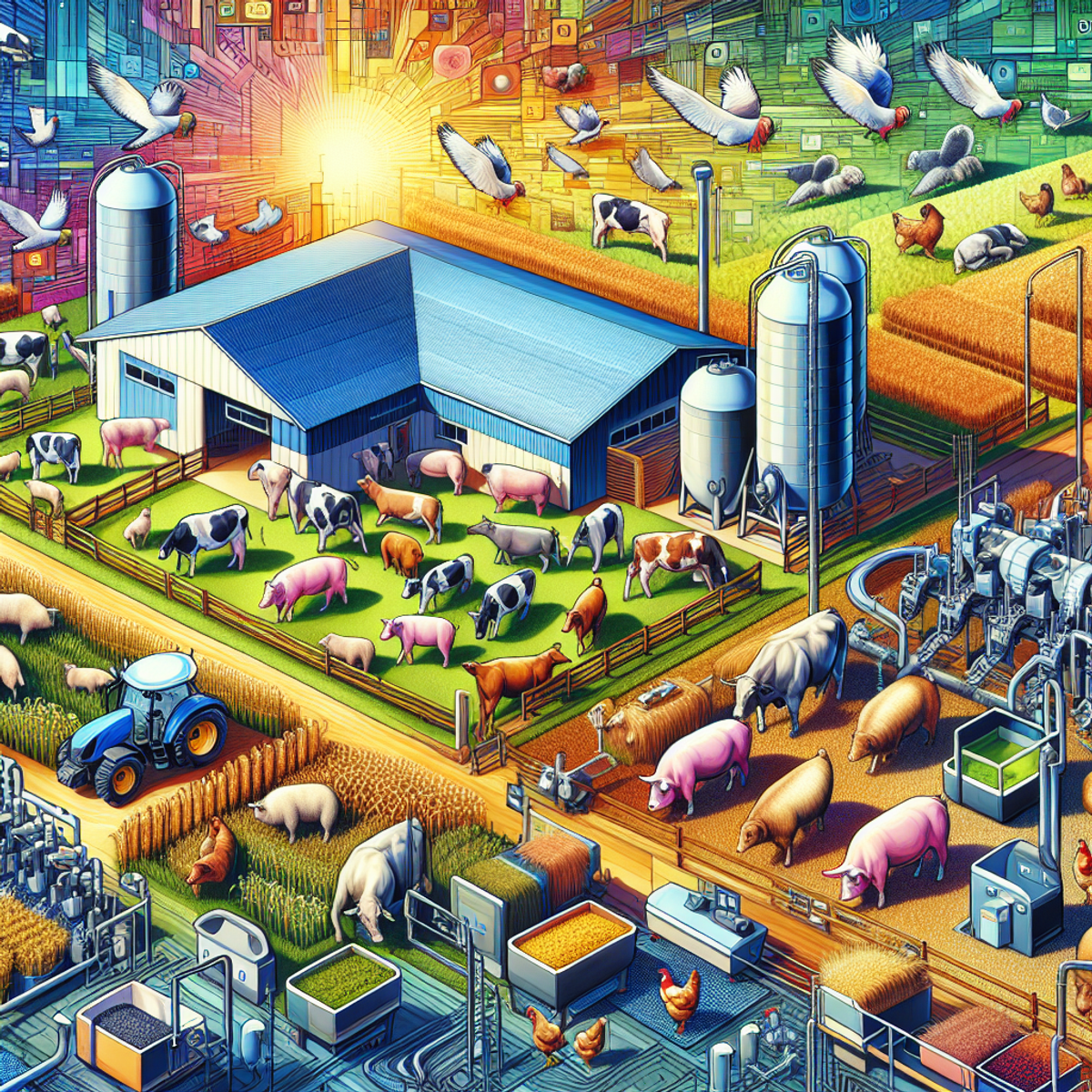
Precision Livestock Farming, also known as PLF, refers to the application of advanced technologies and data-driven approaches in the management of livestock. It involves the use of sensors, automation systems, and data analysis tools to improve various aspects of livestock production and welfare. The primary objectives of implementing precision technology in livestock management are:
- Enhanced Monitoring and Management: PLF enables real-time monitoring of individual animals or groups, allowing farmers to track their health, behavior, and performance accurately. By leveraging this technology, farmers can make informed decisions to optimize feeding regimens, detect diseases early, and ensure overall well-being.
- Improved Productivity and Efficiency: The integration of precision technology in livestock farming aims to enhance production efficiency by automating routine tasks and optimizing resource allocation. This leads to improved feed conversion rates, better reproductive performance, and overall higher productivity.
- Sustainability and Environmental Impact: Precision Livestock Farming plays a crucial role in promoting sustainability by enabling farmers to monitor environmental indicators such as water usage, waste management, and greenhouse gas emissions. By utilizing data-driven insights, farmers can implement measures to minimize the environmental impact of their operations.
- Animal Welfare: One of the key objectives of PLF is to ensure the well-being of livestock by providing a conducive and comfortable environment. Through continuous monitoring and control systems, farmers can address issues related to animal welfare promptly, thereby enhancing overall animal health and happiness.
In essence, Precision Livestock Farming represents a paradigm shift in traditional farming practices by harnessing the power of technology to create a more efficient, sustainable, and animal-friendly approach to livestock management.
Key Components of Precision Livestock Farming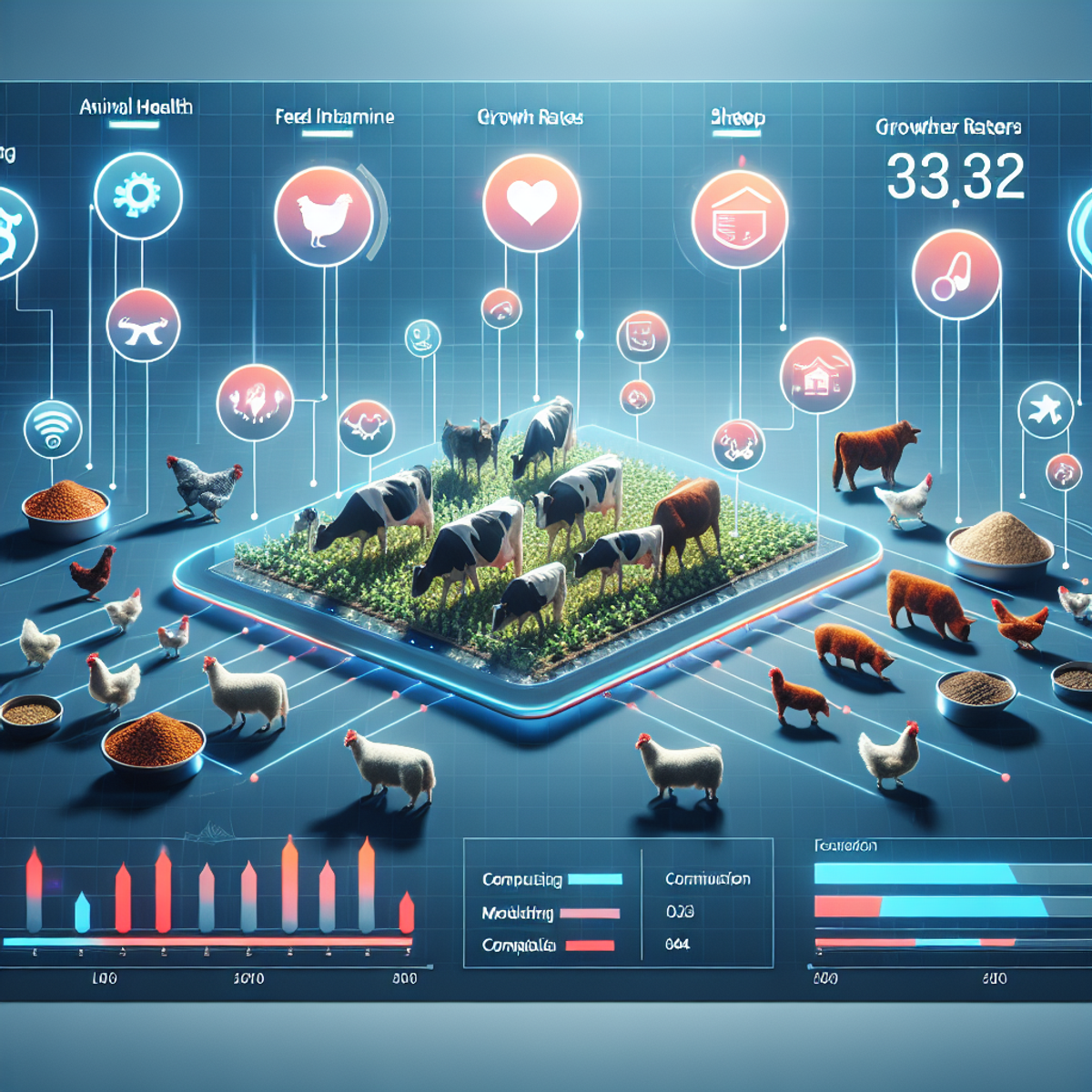
Precision Livestock Farming (PLF) relies on several key components to effectively monitor, analyze, and manage livestock data. These components play a crucial role in advancing the industry and driving informed decision-making for farmers.
1. Sensors and Data Collection
Sensors are integral to capturing accurate and real-time data from livestock, enabling farmers to gain insights into various aspects of animal behavior, health, and performance. Here are some essential points to consider:
Types of Sensors
- RFID tags: These tags enable individual animal identification and tracking, allowing farmers to monitor movement patterns and behavior.
- Wearable health monitors: Devices such as smart collars or ear tags can track vital signs like heart rate, body temperature, and activity levels in animals.
- Environmental sensors: These sensors measure factors like temperature, humidity, and air quality within livestock facilities, contributing to overall welfare assessment.
Methods and Techniques for Data Collection
Efficient data collection methods are crucial for ensuring the accuracy and reliability of the information gathered. Some techniques include:
- Automated data capture: Utilizing automated systems for data collection minimizes human error and facilitates continuous monitoring without manual intervention.
- Remote sensing technologies: Drones equipped with imaging sensors can provide valuable aerial data on livestock distribution and environmental conditions across large farming areas.
Role of Accurate Data
Accurate data serves as the foundation for informed decision-making in PLF. It empowers farmers to:
- Identify potential health issues early through continuous monitoring.
- Optimize feed and water distribution based on consumption patterns.
- Enhance breeding programs by analyzing reproductive performance data.
By leveraging a diverse range of sensors and employing efficient data collection methods, farmers can gather comprehensive insights into their livestock's well-being and productivity. This data forms the basis for implementing precision management strategies that drive positive outcomes in livestock farming.
2. Data Analysis and Algorithms
Data analysis and algorithms are essential in Precision Livestock Farming (PLF) for deriving valuable insights from the large amounts of livestock data collected through sensors and other methods. By using advanced analytics techniques, PLF practitioners can:
- Make informed decisions
- Optimize livestock management practices
- Improve overall farm productivity
The Importance of Data Analysis in PLF
Data analysis in PLF involves processing and interpreting the collected data to extract meaningful information that can drive actionable outcomes. Here are some key points highlighting the significance of data analysis in PLF:
1. Identification of Patterns and Trends
Through data analysis, farmers can identify patterns and trends within the livestock data, which helps them understand their animals' behavior, health status, and productivity levels better. For example, analyzing temperature, humidity, and feeding patterns can help detect stress or disease outbreaks among livestock.
2. Early Disease Detection
By using machine learning algorithms to analyze various parameters such as body temperature, heart rate, and feed intake, PLF systems can detect early signs of diseases in livestock. This early detection allows for prompt intervention and treatment, minimizing the spread of diseases within the herd or flock.
3. Optimization of Feeding Strategies
Data analysis can provide insights into optimal feeding strategies by analyzing feed intake patterns, nutrient requirements, and growth rates of individual animals. By tailoring feeding plans based on individual animal needs, farmers can maximize feed efficiency and reduce costs while ensuring optimal animal health.
Commonly Used Data Analysis Methods in PLF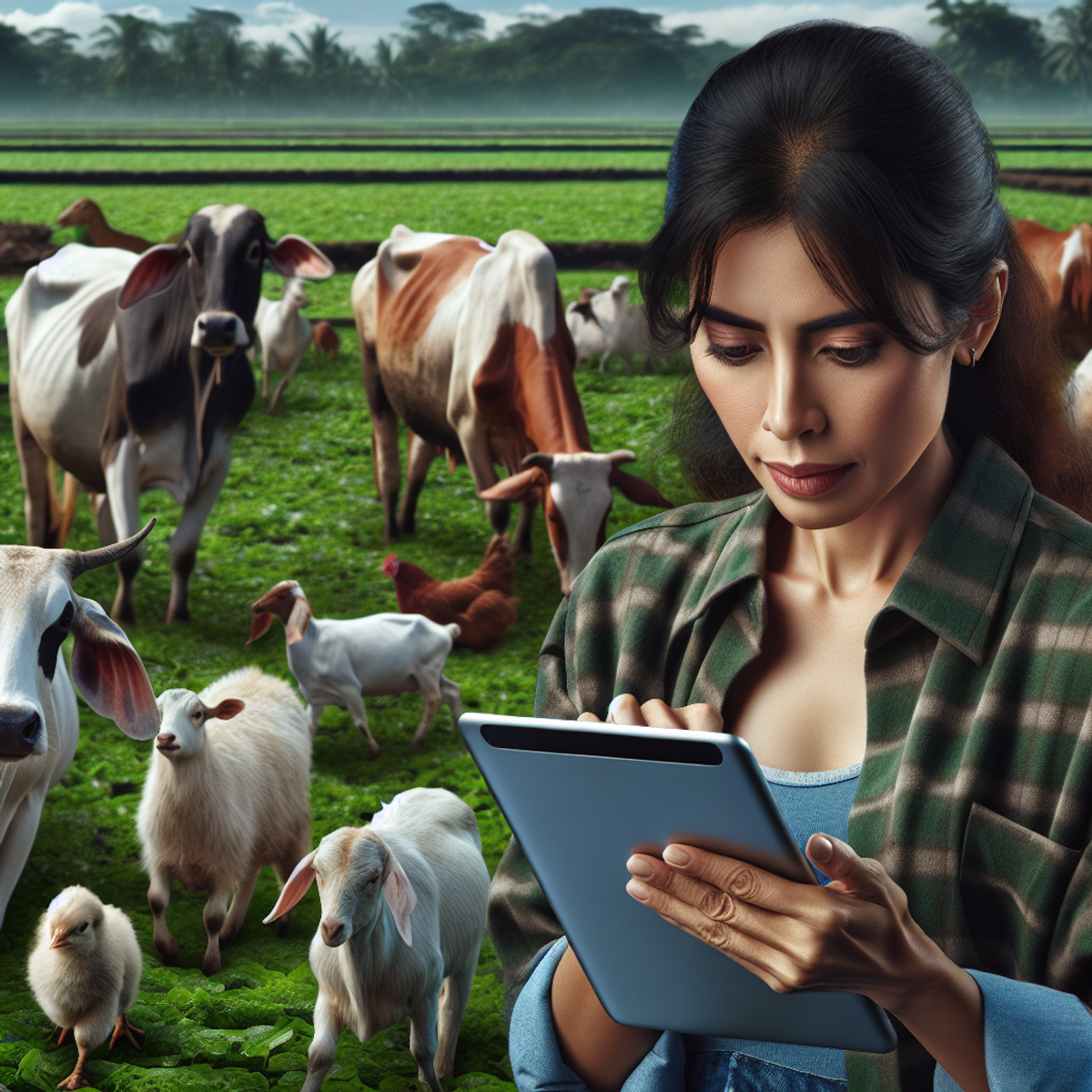
In Precision Livestock Farming, various data analysis methods are used to make sense of the collected data. These methods enable farmers to gain actionable insights and make informed decisions about their livestock management practices. Here are some commonly used data analysis methods in PLF:
1. Machine Learning Algorithms
Machine learning algorithms are widely used in PLF for tasks such as disease detection, behavior analysis, and prediction modeling. These algorithms can learn from historical data to make accurate predictions or classifications. For example, machine learning algorithms can analyze historical data on feeding patterns and detect abnormal eating behaviors that may indicate health issues.
2. Statistical Analysis
Statistical analysis techniques are applied to identify correlations and relationships between different variables in livestock data. For instance, statistical analysis can be used to determine the impact of environmental factors on animal behavior or identify the relationship between feed composition and growth rates.
3. Data Visualization
Data visualization techniques are used to present complex livestock data in a visual format that is easy to understand. By using charts, graphs, and heatmaps, farmers can quickly identify trends, outliers, and patterns within their data, facilitating decision-making.
The Role of Algorithms in PLF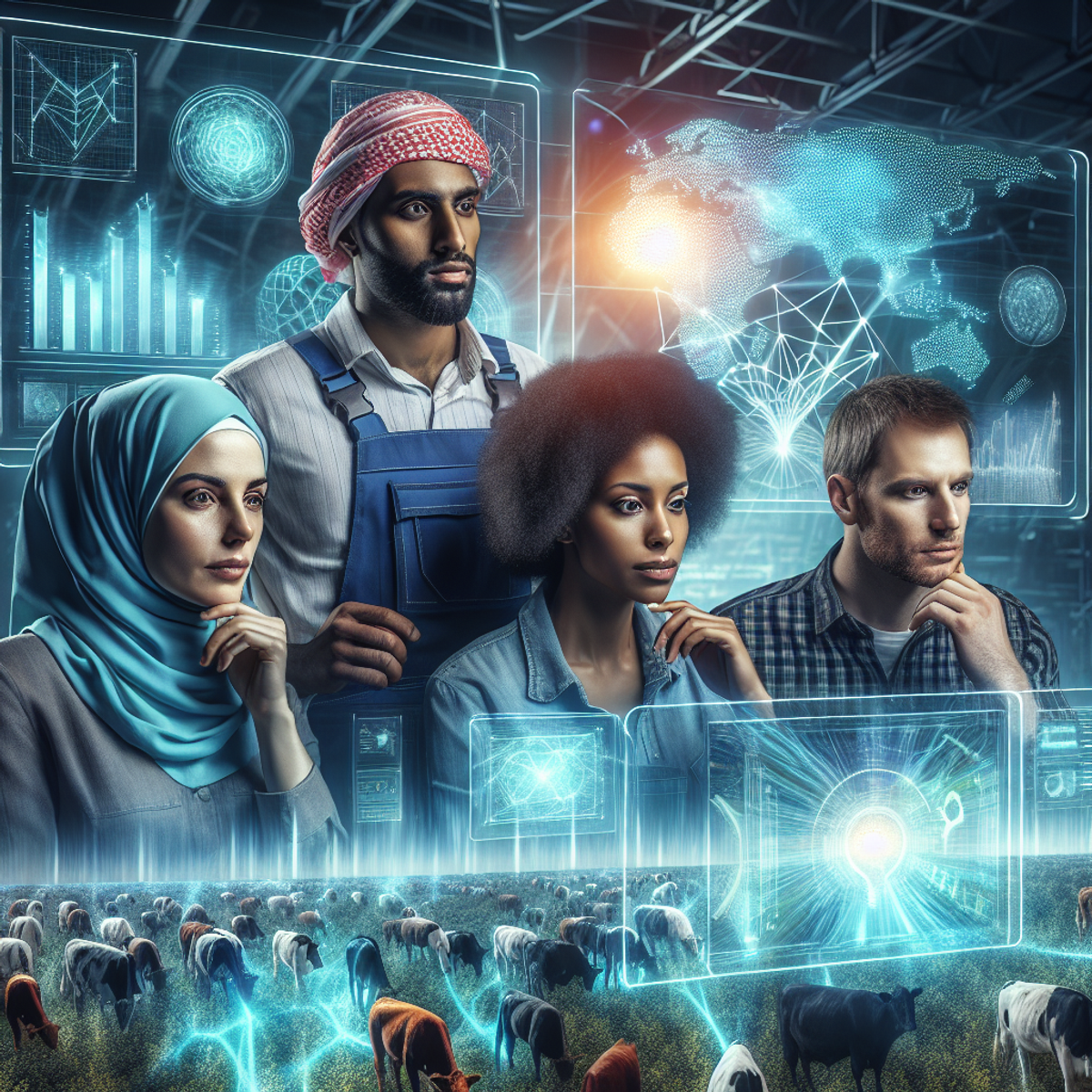
Algorithms are essential components of Precision Livestock Farming systems as they enable:
- Automation of processes
- Predictive modeling
- Decision support
Here are some ways algorithms contribute to PLF:
1. Automated Decision Support
Algorithms can analyze real-time sensor data to provide farmers with automated decision support. For example, algorithms can analyze environmental conditions and recommend adjustments to temperature or ventilation systems to optimize animal comfort.
2. Predictive Modeling
By using predictive modeling techniques, algorithms can forecast future outcomes based on historical data. This enables farmers to anticipate changes in livestock behavior or health conditions and take preventive measures accordingly.
3. Optimization of Resource Allocation
Algorithms can optimize resource allocation in PLF by considering various factors such as feed availability, animal health conditions, and market demand. By optimizing resource allocation, farmers can minimize waste and maximize profitability.
In conclusion, data analysis and algorithms play a crucial role in Precision Livestock Farming by enabling farmers to extract valuable insights from collected livestock data. These insights empower farmers to make informed decisions regarding animal health, welfare, feeding strategies, and overall farm productivity. By leveraging advanced analytics techniques and incorporating algorithms, PLF practitioners can revolutionize their livestock management practices and drive sustainable and profitable outcomes.
3. Automation and Control Systems
Automation and control systems are essential in Precision Livestock Farming (PLF) as they help create the best possible conditions for livestock health and productivity. These systems use advanced technology to make various tasks easier and ensure efficient management of livestock. Here are some important things to know about automation and control systems in PLF:
1. Utilization of automated systems
Automation technologies are used in different parts of the industry to improve efficiency and productivity. These systems automate regular tasks, reducing the need for manual work and allowing farmers to focus on making important decisions. Some examples include:
- Feed dispensers: Automated feed dispensers accurately give feed to livestock based on their specific nutritional needs. This makes sure that animals get the right amount of feed at the right time, which leads to better growth and weight gain.
- Environment regulators: Automated climate control systems keep track of and control temperature, humidity, ventilation, and lighting conditions in livestock housing facilities. By keeping these conditions optimal, these systems make animals more comfortable and result in better health.
2. Benefits of automation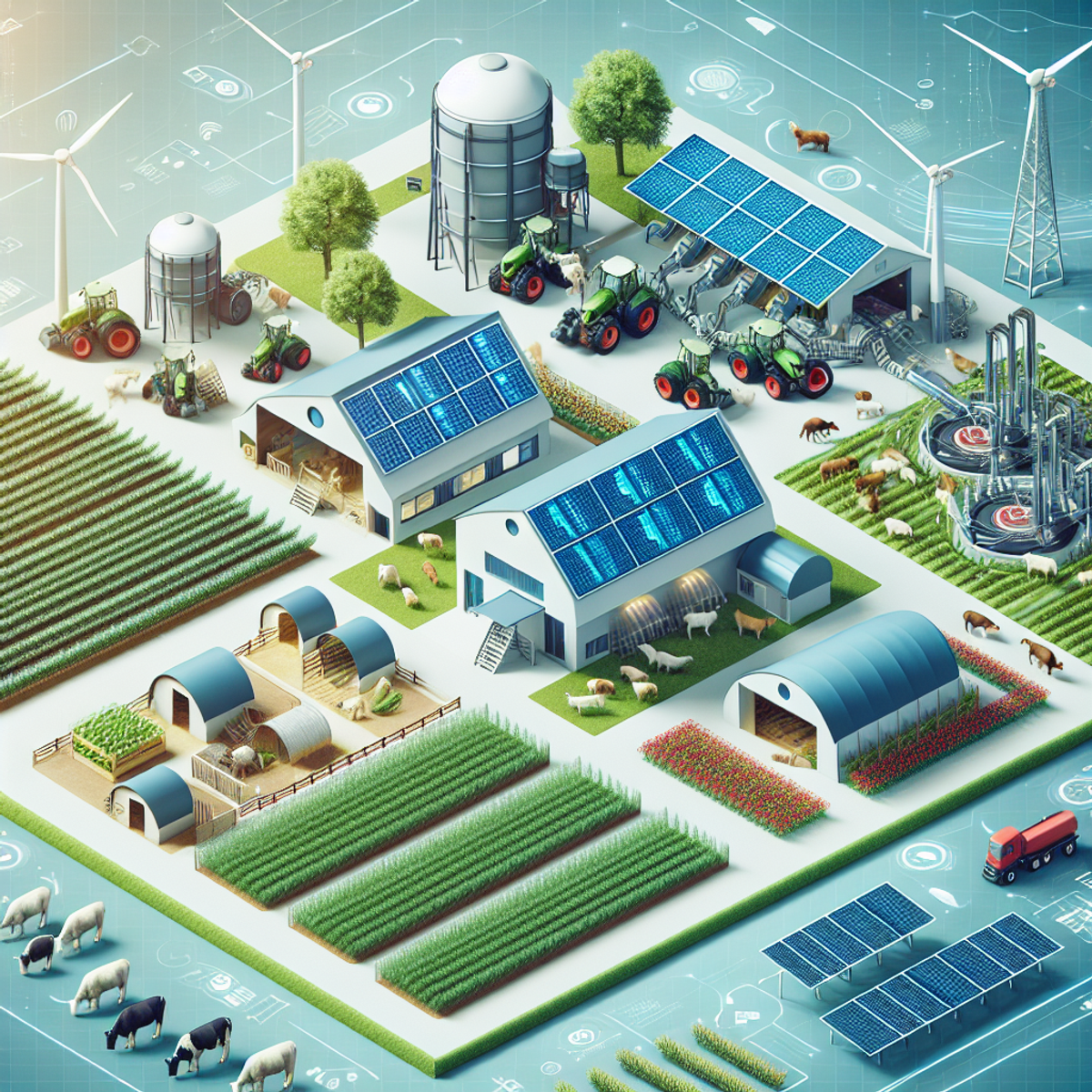
The use of automation in PLF has several advantages for farmers:
- Increased efficiency: Automated systems make processes more streamlined, which means less time is needed for tasks like feeding and climate control. This allows farmers to take care of larger groups of animals without much difficulty and gives them more time for other important farm work.
- Improved accuracy: Automation gets rid of mistakes that can happen when people do tasks manually, making sure that operations are done correctly. For example, automated feed dispensers give the right amount of feed without any waste or underfeeding.
- Enhanced data collection: Many automation systems have sensors that gather real-time data on things like how much feed is consumed, water intake, and environmental conditions. This data gives valuable insights into animal behavior and health trends, which can help with making informed decisions.
3. Integration with data analysis
Automation systems produce a lot of data that can be used for analysis and decision-making. By combining automation with tools for data analysis, farmers can get actionable insights from the data they collect. For example:
- Data-driven health monitoring: Automated systems can find unusual things in how animals behave or their vital signs, which can be a sign of possible health problems. By looking at the data they gather, farmers can spot early signs of diseases and take steps to prevent them quickly.
- Performance optimization: Data analysis helps farmers see patterns and trends related to how well their livestock are doing. By studying things like how much feed is consumed and how fast animals grow, farmers can make changes to their feeding plans and management methods to get the most out of their animals.
Automation and control systems are important parts of a complete PLF system. These technologies let farmers create the best possible conditions for their livestock while also making operations easier and more efficient. By combining automation with data analysis, farmers can use technology to make smart choices that increase productivity and improve animal welfare.
Python: The Powerhouse behind Precision Livestock Farming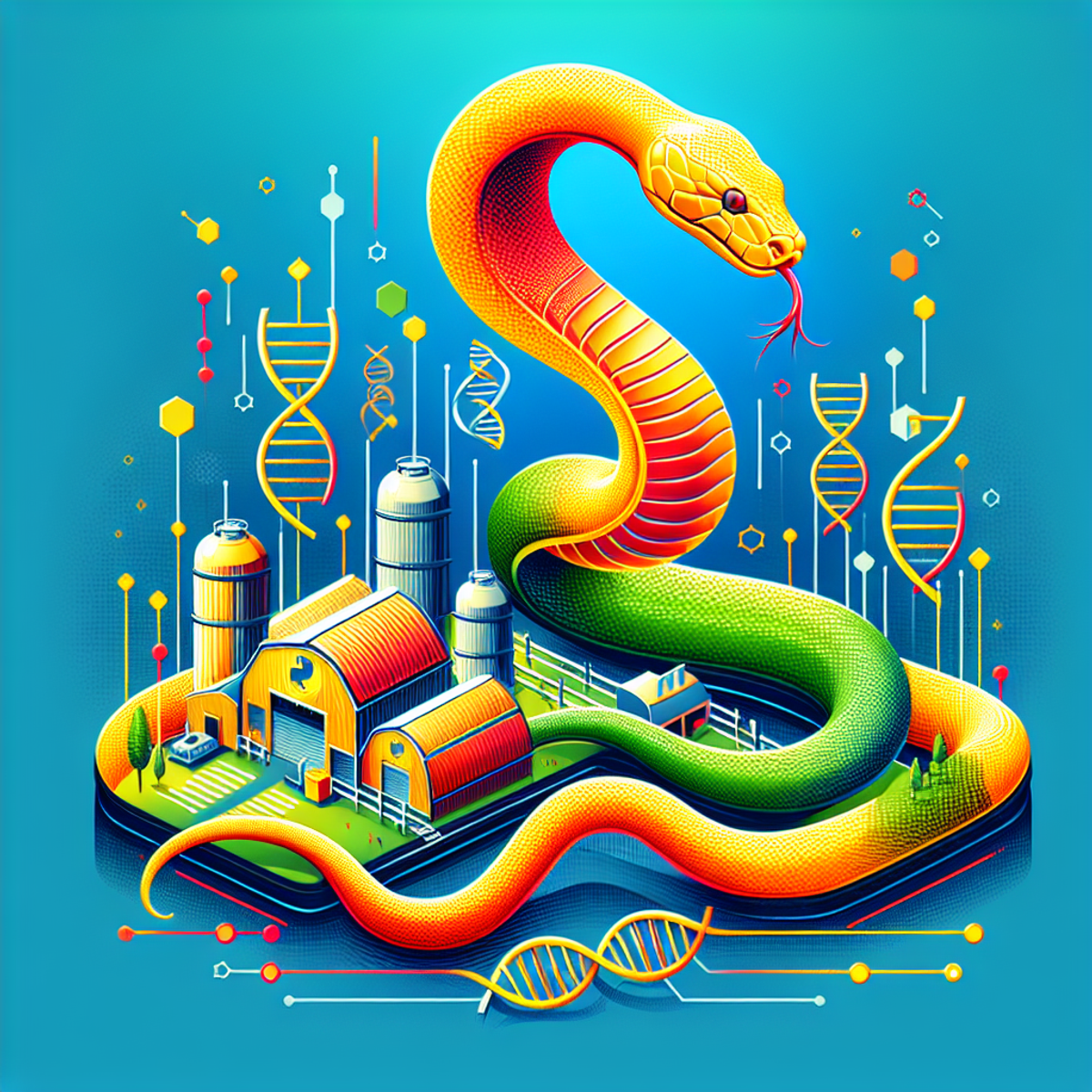
Python programming language has emerged as a powerful tool in the domain of Precision Livestock Farming (PLF), revolutionizing the industry through data analysis and automation. With its versatility, ease of use, and extensive libraries, Python plays a crucial role in extracting valuable insights from livestock datasets and driving informed decision-making for farmers.
1. Data Analysis with Python
Python offers a range of libraries and tools that are widely used for data analysis in Precision Livestock Farming. Some key libraries include:
pandas
pandas is a popular Python library for data manipulation and analysis. It provides data structures such as dataframes that allow easy handling and processing of large datasets. In PLF, pandas can be used to organize and preprocess livestock data, perform statistical analysis, and generate meaningful visualizations.
NumPy
NumPy is a fundamental library for scientific computing in Python. It provides support for large, multi-dimensional arrays and matrices, along with a collection of mathematical functions to operate on these arrays efficiently. In PLF, NumPy can be utilized for numerical computations involving livestock data, such as calculating averages, standard deviations, or performing matrix operations.
scikit-learn
scikit-learn is a machine learning library that offers a wide range of algorithms for various tasks, including classification, regression, clustering, and dimensionality reduction. In PLF, scikit-learn can be employed to develop predictive models based on livestock data. For example, it can be used to build disease detection models by training on historical health records of animals.
Case studies highlighting the application of Python in extracting actionable insights from livestock datasets further demonstrate its power in PLF:
- Livestock Health Monitoring: Python is used to analyze sensor data collected from wearable devices on animals to monitor their health status. By applying machine learning algorithms on this data, patterns can be identified that indicate potential health issues. For instance, abnormal feeding patterns or changes in activity levels can be early indicators of illness or stress.
- Nutritional Optimization: Python is utilized to analyze feed consumption data of livestock and optimize the nutritional content to improve animal growth and production. By analyzing the relationship between feed composition, growth rates, and feed conversion efficiency, farmers can make informed decisions to enhance feed formulations and minimize costs.
- Reproduction Management: Python is employed to analyze reproductive data of animals, including breeding records, fertility rates, and gestation periods. By examining historical data and identifying key factors influencing successful reproduction, farmers can optimize breeding strategies, leading to improved reproductive performance.
2. Automation with Python
 Python's scriptability makes it an ideal choice for automating routine tasks in livestock management operations. By leveraging Python's capabilities, farmers can streamline their processes and improve efficiency and productivity. Here are some examples of Python-based automation systems deployed in farms:
Python's scriptability makes it an ideal choice for automating routine tasks in livestock management operations. By leveraging Python's capabilities, farmers can streamline their processes and improve efficiency and productivity. Here are some examples of Python-based automation systems deployed in farms:
Feeding Automation
Python is used to develop automated feed dispensers that accurately distribute feed based on individual animal requirements. By integrating sensors and weighing systems with Python scripts, farmers can ensure optimal feeding regimes while minimizing wastage.
Environment Regulation
Python is employed to control environmental parameters such as temperature, humidity, and ventilation in livestock housing systems. By monitoring sensor data and adjusting settings automatically, farmers can create optimal conditions for animal health and productivity.
Data Logging
Python is utilized for automating the collection and logging of sensor data from various devices across the farm. With Python scripts running on embedded systems or microcontrollers, farmers can continuously capture real-time data without manual intervention.
Automation powered by Python not only saves time but also reduces human error in mundane tasks, allowing farmers to focus on more critical aspects of their operations.
Python's role in PLF goes beyond data analysis and automation; it also paves the way for emerging trends and future applications in the industry. For example, Python is being integrated with remote sensing technologies to monitor livestock behavior and welfare in real-time. Predictive analytics models are also being developed using Python to forecast disease outbreaks and optimize resource allocation on farms.
Python has become the powerhouse behind Precision Livestock Farming, enabling farmers to extract valuable insights from livestock datasets and automate routine tasks. By embracing Python and exploring its potential, farmers can advance sustainability, profitability, and animal welfare in their own livestock farming practices.
2. Automation with Python
Python plays a crucial role in Precision Livestock Farming (PLF), not just for data analysis but also for automation. Its flexibility and extensive library ecosystem make it the top choice for developers working on data-driven agriculture projects.
Scriptability for Automation
Python's ability to be easily scripted allows developers to automate repetitive tasks in livestock management operations effortlessly. Its clear and readable syntax enables quick prototyping and deployment of automation systems, making processes more efficient and farms more productive.
Python-Based Automation Systems
Python is widely used in PLF to create various automation systems that optimize different aspects of livestock farming:
- Feed Dispensing Systems: Automated feed dispensers developed using Python ensure precise control over the distribution of feed to livestock. This can be based on predetermined schedules or real-time monitoring.
- Environment Regulation: Python is utilized in creating climate control systems that maintain optimal environmental conditions within livestock housing. This helps ensure the well-being and productivity of the animals.
- Skills Taxonomy Management: In addition to the above applications, Python also finds utility in managing the skills taxonomy required for PLF operations. This ensures that the right expertise is available for every task, leading to more effective farm management.
- Self-hosted Solutions: For those concerned about data privacy and control, Python offers opportunities to build self-hosted automation systems tailored specifically to their needs, without relying on external services.
These automation systems, powered by Python, play a significant role in improving efficiency, increasing productivity, and ultimately benefiting farmers across different sectors of the industry.
In summary, Python's seamless integration with automation technologies in PLF highlights its crucial role in fostering innovation and promoting sustainable practices within modern livestock farming. Additionally, Python's capabilities extend beyond just automation, as it is also employed in optimization modeling, further enhancing its value in the field of PLF.
Emerging Trends and Future Applications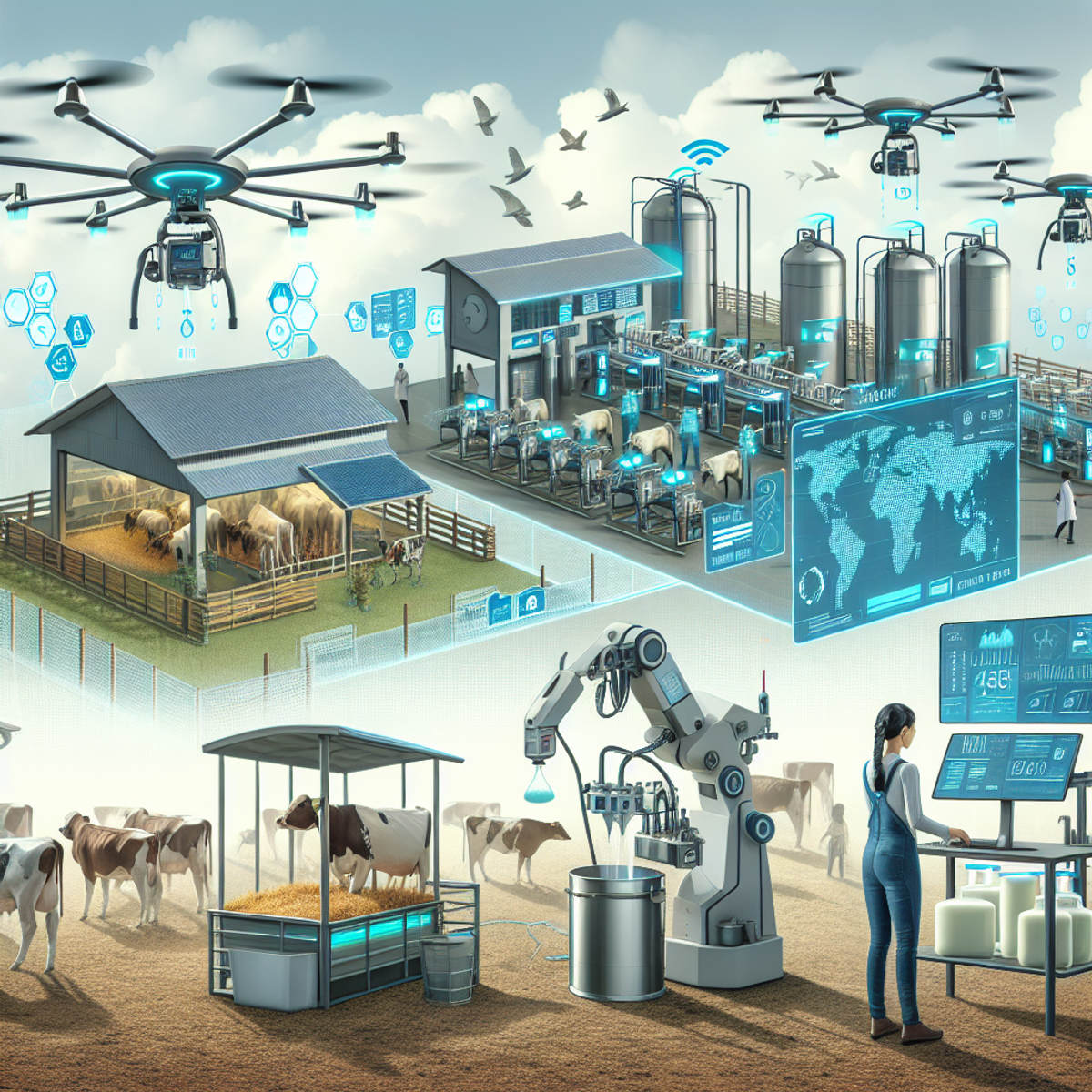
The field of Precision Livestock Farming (PLF) is always changing as technology and data analysis improve. Python, with its flexibility and powerful libraries, continues to be a key player in shaping the future of PLF. Here are some exciting trends and future applications where Python is set to transform Precision Livestock Farming:
1. Remote Sensing Technologies
- Python is being used to develop remote sensing technologies that can monitor livestock health and behavior from a distance.
- Using sensors and cameras, systems powered by Python can identify unusual changes in temperature, humidity, and animal movements.
- These technologies enable farmers to spot early signs of diseases, stress, or discomfort in their livestock, ensuring prompt action.
2. Predictive Analytics Models
- Python's powerful machine learning libraries like scikit-learn and TensorFlow are being used to create predictive models for livestock management.
- By analyzing past data on factors such as feed intake, growth rates, and environmental conditions, these models can make predictions about the future.
- Farmers can use these predictions to optimize feeding schedules, manage breeding programs more efficiently, and increase overall productivity.
3. Internet of Things (IoT) Integration
- Python's ability to work with IoT devices allows for smooth integration with PLF systems.
- By leveraging the power of IoT in agriculture, farmers can connect different sensors, actuators, and control mechanisms to a central network using Python scripts.
- This automation streamlines tasks like feeding or adjusting the environment leading to improved efficiency, lower labor costs, and better animal well-being.
4. Blockchain Technology
- Combining blockchain technology with Python can ensure secure and transparent record-keeping in PLF.
- Through smart contracts written in Python code, farmers can verify the accuracy of data regarding animal health records, genetic information, or food safety certifications.
- This technology can help establish trust among farmers, consumers, and regulatory bodies, promoting sustainable and ethical practices in livestock farming.
As Python continues to develop and meet the needs of Precision Livestock Farming, we can anticipate even more innovative applications that will further transform the industry. By embracing these emerging trends, farmers can use the power of Python to improve sustainability, profitability, and animal well-being in their livestock farming methods. Additionally, data science is playing a significant role in revolutionizing farming practices across various domains within agriculture.
Case Studies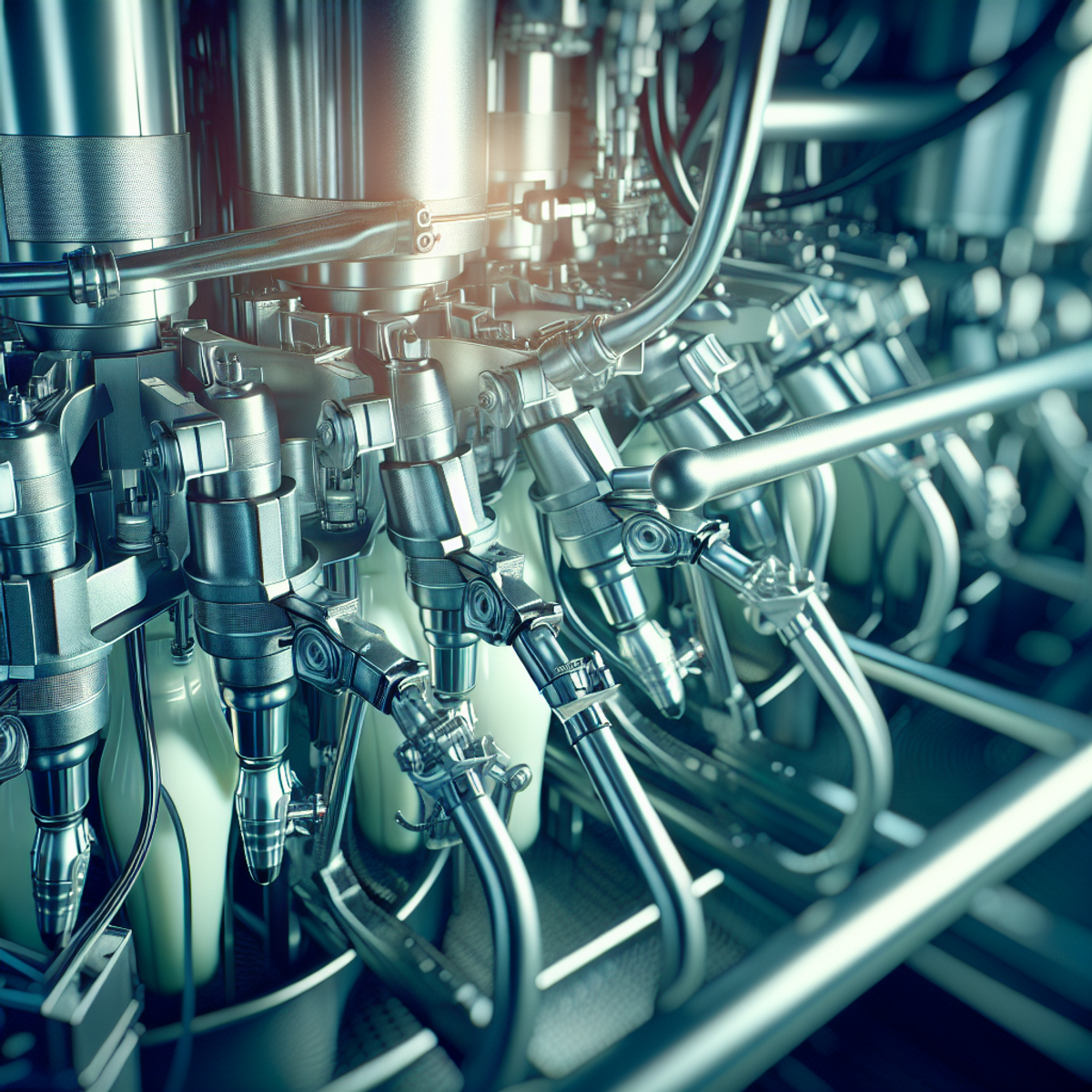
Robotic Milkers, Dairy Industry
In the dairy industry, Python plays a crucial role in optimizing the operation of robotic milkers. These advanced systems automate the milking process, enhancing efficiency and reducing the manual labor required. Python is utilized for data analysis and monitoring of key metrics in real-time, providing dairy farmers with valuable insights into the productivity and health of their livestock. By leveraging Python, dairy farmers can make informed decisions regarding the management of their milking operations, leading to improved milk quality and overall herd health.
Automated Weight Detection Cameras, Swine Industry
Python is employed in the implementation of automated weight detection cameras in the swine industry. These cameras use advanced image processing techniques to accurately measure the weight of individual pigs, enabling farmers to track growth rates and identify potential health issues at an early stage. Python's data analysis capabilities are leveraged to interpret the data collected by these cameras, allowing farmers to monitor the development of their swine more effectively and optimize feeding regimens based on precise weight measurements.
Climate Control Systems, Poultry Industry
In the poultry industry, climate control systems play a vital role in maintaining optimal environmental conditions for bird health and productivity. Python is utilized to automate and optimize these systems, ensuring that temperature, humidity, and ventilation parameters are closely monitored and adjusted as needed. By applying Python for data analysis and control logic, poultry farmers can create ideal conditions within their facilities, leading to enhanced bird welfare, reduced stress, and ultimately improved production outcomes.
Real-World Impact
These case studies exemplify how Python is integrated into diverse sectors of Precision Livestock Farming to drive innovation and improve outcomes for farmers:
- Robotic Milkers: Streamlining milking processes in dairy farms through automation.
- Automated Weight Detection Cameras: Implementing advanced monitoring systems in the swine industry for accurate weight measurement.
- Climate Control Systems: Optimizing environmental controls in poultry facilities to ensure optimal conditions for bird health and productivity.
By harnessing Python's capabilities for data analysis, automation, and control, farmers can:
- Gain valuable insights into their livestock's health and behavior.
- Implement proactive measures to maximize productivity and welfare.
As Precision Livestock Farming continues to evolve, Python remains at the forefront of technological advancements driving positive change within the industry. Its applications go beyond just data analysis; it extends to crucial aspects of livestock management, paving the way for a more connected, efficient, and informed approach to modern farming practices.
The Way Forward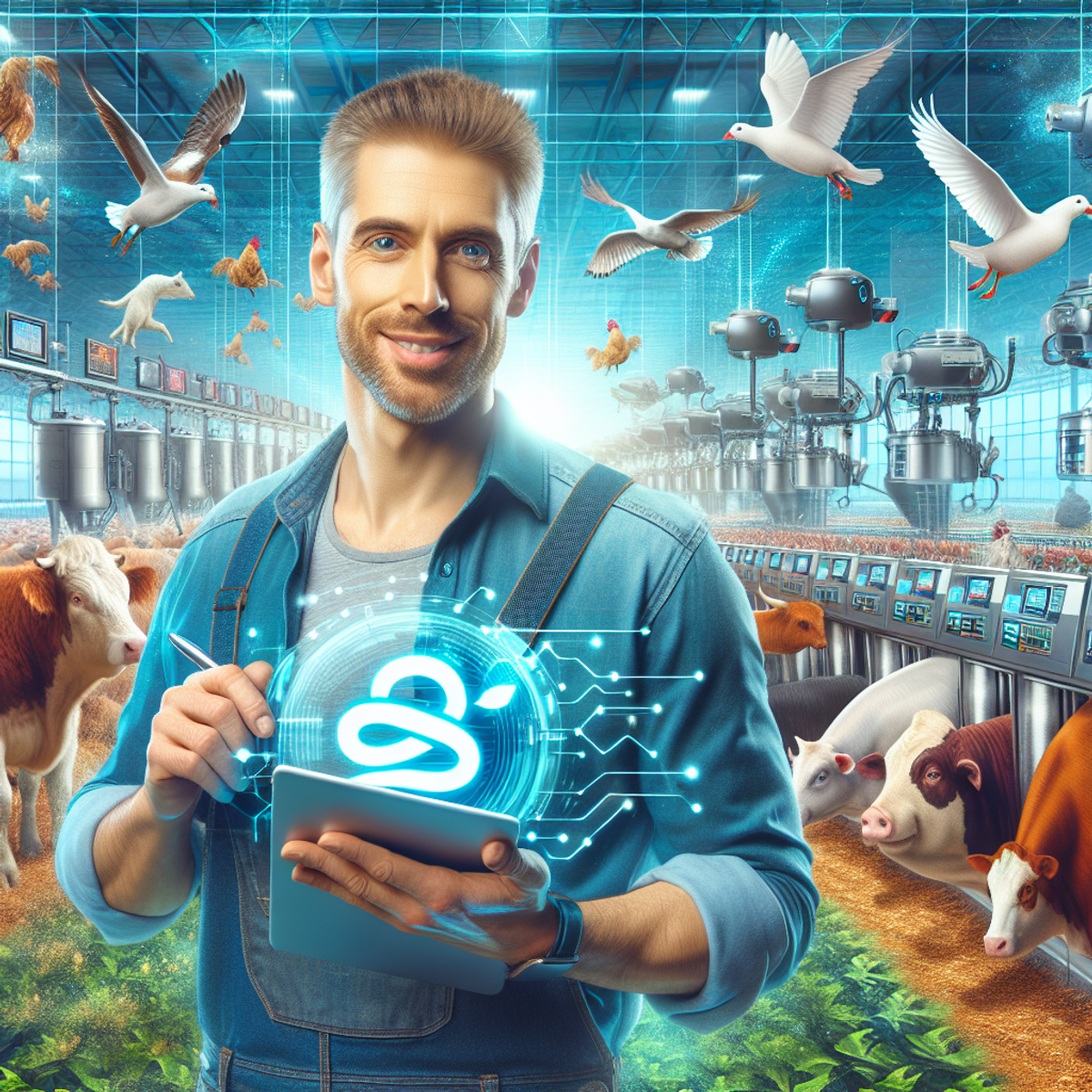
Python plays a crucial role in revolutionizing Precision Livestock Farming (PLF) through data analysis and automation. By embracing Python, farmers can unlock the potential of this powerful programming language to improve sustainability and profitability in their livestock farming practices. Here are some ways forward for incorporating Python in PLF:
1. Embrace Python for Data Analysis
Python offers a wide range of libraries and tools that are specifically designed for data analysis in PLF. Two popular libraries include pandas and NumPy. Pandas provides efficient data structures and functions for manipulating structured data, while NumPy enables high-performance numerical computations.
By learning and utilizing these libraries, farmers can extract actionable insights from their livestock datasets. For example, they can analyze historical data to identify patterns that correlate with animal health and productivity. This knowledge can then inform management decisions, such as adjusting feed formulations or optimizing breeding programs.
2. Harness the Power of Automation with Python
Python's scriptability makes it an ideal tool for automating routine tasks in livestock management operations. By writing scripts or using existing automation systems built on Python, farmers can streamline their workflows and improve operational efficiency.
For instance, Python can be used to automate feeding processes by controlling feed dispensers based on predefined schedules or sensor readings. It can also be utilized to monitor environmental conditions in real-time, adjusting ventilation systems or temperature controls accordingly.
3. Stay Updated on Industry Trends
The field of PLF is constantly evolving, with new technologies and techniques emerging regularly. To stay ahead of the curve, it's essential to stay updated on industry trends and advancements.
Here are some resources that can help you learn more about Python in PLF and keep abreast of the latest developments:
- Online tutorials: There are numerous online tutorials and courses available that provide step-by-step guidance on using Python for PLF. Websites like DataCamp, Coursera, and Udemy offer courses specifically tailored to data analysis and automation in agriculture.
- Online communities: Joining online communities, such as forums or social media groups, can provide a platform for knowledge sharing and networking with like-minded individuals. Platforms like Stack Overflow, Reddit, and LinkedIn groups often have discussions and resources related to Python in PLF.
- Industry conferences and events: Attending conferences and events focused on PLF or agricultural technology can provide valuable insights into the latest trends and innovations. These gatherings often feature presentations, workshops, and networking opportunities with experts in the field.
Python's versatility and power make it an invaluable tool for advancing sustainability and profitability in Precision Livestock Farming. By embracing Python for data analysis and automation, farmers can make informed decisions, optimize their operations, and improve livestock welfare. It's essential to stay updated on industry trends and continue exploring the potential of Python in PLF. So why not start learning Python today and unlock new possibilities for your livestock farming practices?
Conclusion
Precision Livestock Farming (PLF) is changing the livestock industry by using advanced technologies to optimize animal management and improve overall productivity. Python, with its strong data analysis and automation abilities, has become an important tool in driving innovation and efficiency in PLF.
Benefits of PLF
- Accurate and Real-time Information: Through the use of sensors and data collection, PLF allows farmers to gather precise and up-to-date information about their livestock.
- Insights for Decision-making: This data, combined with Python's data analysis capabilities through libraries like pandas and NumPy, helps farmers understand animal health, behavior, and productivity better.
- Efficient Automation: Python's scriptability and user-friendly nature enable farmers to automate repetitive tasks such as feeding, regulating the environment, and detecting diseases.
Future Possibilities
Looking ahead, there are exciting developments on the horizon for Python applications in PLF:
- Improved Data Collection: Remote sensing technologies are being developed to enhance data gathering capabilities further, enabling farmers to monitor their livestock more effectively.
- Proactive Decision-making: Predictive analytics models powered by Python will allow farmers to make proactive decisions based on forecasting animal behavior and health trends.
Real-world Examples
Real-world case studies demonstrate how Python is being used in different areas of PLF:
- Dairy Farms: Robotic milkers controlled by Python are being used in dairy farms to automate the milking process, resulting in increased efficiency.
- Poultry Farms: Climate control systems driven by Python are helping poultry farms maintain optimal environmental conditions for chickens, leading to improved outcomes.
Key Takeaways
In conclusion, adopting Python is crucial for farmers who want to make the most of PLF:
- By leveraging Python's data analysis and automation capabilities, farmers can:
- Enhance sustainability in their farming practices.
- Increase profitability through optimized resource allocation.
- Improve animal welfare by identifying and addressing health issues promptly.
- Learning resources such as online tutorials, courses, and industry forums can aid individuals in acquiring Python skills and staying informed about PLF trends.
Make the decision to explore Python and unlock the potential of Precision Livestock Farming for a more efficient, sustainable, and profitable future.
FAQs (Frequently Asked Questions)
What is Precision Livestock Farming?
Precision Livestock Farming refers to the use of advanced technologies and data analysis techniques to improve livestock management practices. It aims to enhance productivity, animal welfare, and sustainability in the agricultural sector.
How does Python contribute to Precision Livestock Farming?
Python has revolutionized the industry through its capabilities in data analysis and automation. It enables farmers to make informed decisions based on accurate data and facilitates the implementation of automated systems for improved efficiency and productivity.
What are the key components of Precision Livestock Farming?
The key components of Precision Livestock Farming include sensors for data collection, data analysis techniques, automation technologies, and control systems. These elements work together to optimize livestock management practices.
What are some examples of sensors used in capturing livestock data?
Examples of sensors used in capturing livestock data include weight detection cameras, temperature sensors, and activity monitors. These sensors play a crucial role in efficient data collection for informed decision-making by farmers.
How is Python utilized for data analysis in Precision Livestock Farming?
Python is utilized for data analysis through key libraries and tools such as pandas and NumPy. It is also applied in case studies to extract actionable insights from livestock datasets, contributing to informed decision-making in the industry.
What are some emerging trends for Python applications in Precision Livestock Farming?
Promising advancements on the horizon for Python applications in Precision Livestock Farming include remote sensing technologies and predictive analytics models. These trends demonstrate the continuous evolution of Python's role in driving innovation within the industry.


Comments
Post a Comment